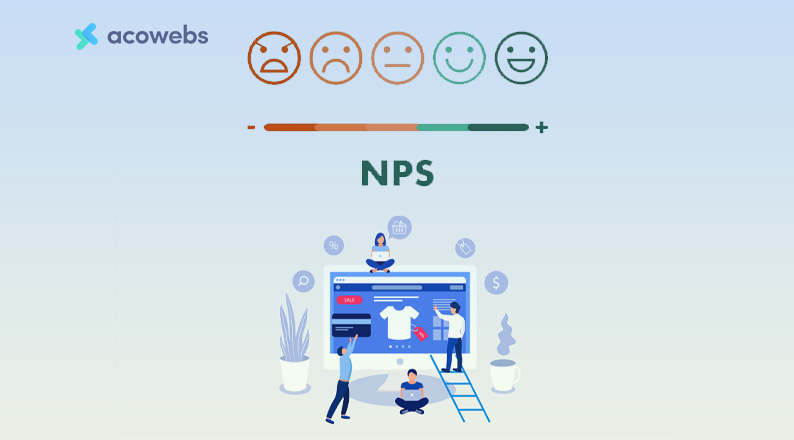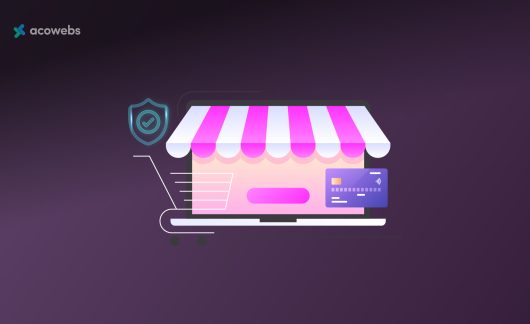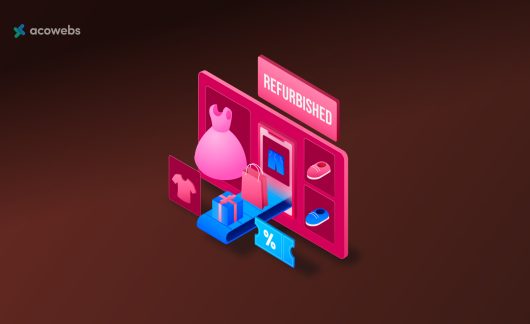Net Promoter Score (NPS) is a leading Key Performance Indicator (KPI) used by eCommerce outlets today to enhance customer loyalty, brand reputation, and business growth.
Customer-centric businesses are always on the lookout for areas and ways to enhance the customer experience.
This goal is best accomplished by using tools that can identify the most important customers, their perceptions about the brand, and areas to address for improved customer satisfaction.
Some aspects of customer experience are so unique, qualitative, and subjective that it is difficult to measure and rectify them unless you are using smart and powerful tools like NPS.
But why should you worry about eCommerce scores?
By tracking customer loyalty, you can remedy the causes of churn on time to keep your customers buying from you and referring others, which helps build a steady income stream.
In this guide, you will learn more about how to use NPS in your eCommerce website to drive more sales.
What is Net Promoter Score (NPS)?
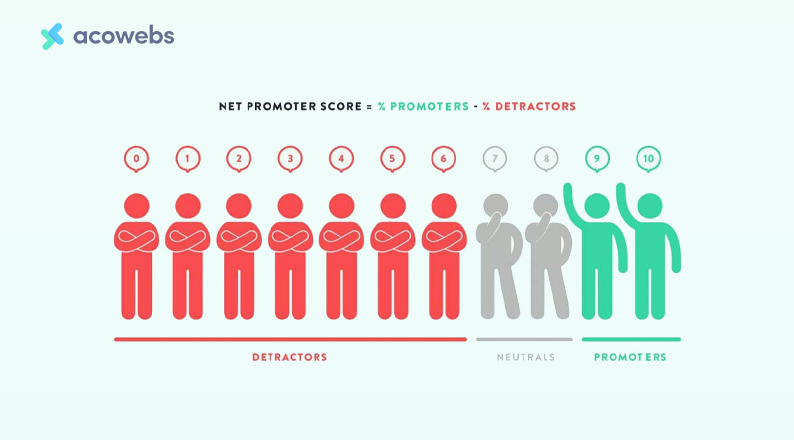
A leading customer experience program, NPS, measures the number of customers willing to recommend your products and services to others.
It is a way eCommerce businesses use to measure customer satisfaction and loyalty, and the likelihood that your existing customers will refer your business to their personal or professional network.
A high NPS indicates that your customers are more likely to promote your products actively and become brand ambassadors, while a low NPS is a show of unhappy customers who are likely to leave you for the competition or dissuade their network from using your products.
Running an eCommerce store requires that you actively monitor what customers are saying and feeling about your brand to avoid spending huge budgets on marketing only to acquire new customers and lose them soon thereafter.
The NPS system was first coined in 2003 by Fred Reichheld as a way to effectively gauge how well an organization treats its customers and employees, and how well it generates relationships worthy of loyalty.
The many tests done around the invention of NPS have resulted in one main question that you can use in conjunction with others to measure customer loyalty:
“How likely is it that you recommend our brand to a friend or colleague?”
ALSO READ: A complete guide to eCommerce referral marketing
How to calculate NPS
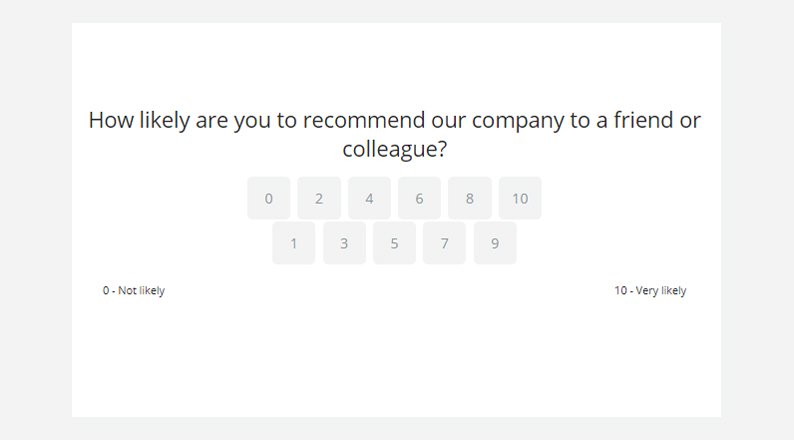
Your survey should aim at measuring the likelihood that your customers will refer their friends and family to buy your products.
Avoid asking a simple “yes” or “no” answer, as this approach will not give you insights into the specific level your customers are at in terms of satisfaction with services offered and loyalty.
Such oversimplified responses make it harder to determine how and who to convert from one level to another.
Instead, use a rating scale between 0 and 10 to separate responses from promoters, passives, and detractors.
Promoters
Promoters are customers who respond to the survey question with 9 or 10. Customers falling within this category are loyal to your brand, they will buy your products and services again and even spend more, and will refer their friends and family.
It costs less to serve promoters because they are already satisfied with your services, and are there for the long-term. To appreciate their loyalty and cement your relationship with promoters, you can send them freebies, discounted offers, and other promotional materials.
Passives
Customers who respond with 7 to 8 are passives, who are satisfied with your services but not necessarily enthusiastic or excited about their experience with your brand.
Passives can easily turn into detractors if not properly managed. You must create strategies that will instead convert passives into promoters.
ALSO READ: Ways to reduce your eCommerce operating costs
Detractors
Detractors are customers who respond with 0 to 5, and basically, these are unhappy clients who are not likely to recommend your products or services to others.
They may even spread negative messages regarding your business, affecting your brand image, reputation, and sales.
Engage your detractors to determine why they had a bad experience, and find ways to resolve their issues promptly and effectively to avoid a recurrence of the same problem.
You should also use detractors’ feedback to address gaps in your business processes to avoid losing even more customers due to poor experiences.
To calculate NPS, subtract the percentage of detractors from the percentage of promoters.
For instance, if you collected responses from 200 customers and 100 were promoters (50%) while 30 were detractors (15%), your NPS score is 35 (50-15).
According to the Strategic Performance Group (SPG), a good NPS score should be about 34.3, while the maximum possible score is 100.
An NPS score above 70 is a show of excellence, which also indicates that your customers like you, and are spreading positive messages regarding your brand and products to others.
You can use the SPG-recommended rating scale below to help you interpret your scores and take the appropriate action for your eCommerce store:

Why is your NPS important?
Building a strong brand presence comes with ups and downs, and measuring how you are performing every step of the way helps you identify areas that need improvement.
There are several reasons and benefits associated with measuring and using NPS for your eCommerce business:
For positive perception and brand image
Positive messages spread by your promoters help create the impression that you are a good business that takes care of its customers’ needs.
Research by BrightLocal shows that as of 2020, 87% of customers read online reviews for local businesses before making purchase decisions, while another 12 percent will not buy from businesses with less than 5-star ratings.
The statistics indicate how important it is to have promoters that share positive messages regarding your business. It is such sentiments that others view to determine if your brand or products are worth their time and money.
Detractors will tell you exactly what you are not doing right, and they can become your brand advocates if only you manage to address the issues causing the bad experience.
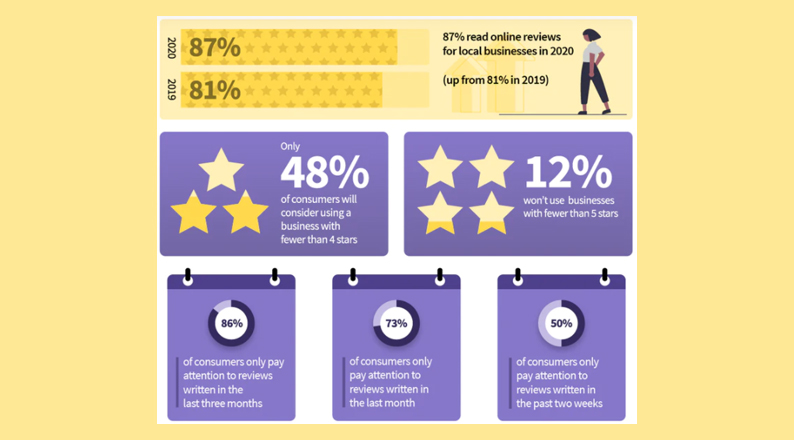
To establish customer loyalty and encourage growth
Even a small increase in NPS score will go a long way in converting your passives and detractors into loyal customers.
The more customers you retain, the more you save on your marketing revenue, and you could use the extra cash to market to a new target audience.
Promoters are also your brand advocates, who help encourage sales and business growth.
For improved competitiveness
ECommerce businesses face stiff competition in areas, such as pricing, branding, product quality, and delivery, etc. Outstanding customer experience will make your brand stand out from the rest, even if you are charging more.
Insights obtained from running NPS surveys will also tell you the areas that you need to improve on to remain ahead of the competition and avoid churn.
ALSO READ: A complete guide to BOPIS (buy online pick up in-store)
How to use NPS in your eCommerce website to drive more sales
By now you have a good idea of what NPS is, how to measure it, and why it is an important metric for your eCommerce business.
But how do you use NPS effectively?
Let’s have a look at 5 effective ways to get started
Design your survey
Find a preferred survey platform online and integrate it with your customer relationship management (CRM) system Also, keep in mind the CRM challenges to avoid any adverse impact. Some of the best survey tools include Survey Monkey, SoGoSurvey, Typeform, and Zoho Survey.
Other tools like Survicate and GetFeedback are also effective in collecting and analyzing customer satisfaction data, giving you real-time insights that will help improve customer loyalty and sales.
Choose a survey platform that fits your business needs and budget.
Next, design a survey containing a set of two questions:
- How likely are you to recommend (your company) to a friend or colleague? (Rate from 0 to 10)
- Please let us know how we can improve your experience (provide a text box for description)
Remember to keep your questions as simple as possible; two questions are adequate to gather the necessary information on customer perceptions about your brand.
Too many questions will overwhelm the respondents, making them unresponsive, or they could simply skip some important questions if presented with many options.
ALSO READ: How to Use YouTube to Grow Your Ecommerce Sales
Distribute your survey
Send the survey to your customer list through a newsletter or on your web page upon completion of a purchase or course, depending on the type of services you offer.
For email surveys, ensure to provide a link to the survey, which will lead readers to the questions to be responded to.
Another way of doing this is to provide a survey link in follow-up purchases, customer conversations, and other forms of interactions you have with your customers.
Remember to tell the survey participants that the process will only take a few minutes to complete and that every response will be read.
Ensure to survey all customers who are an accurate representative sample of the total number of buyers. You should also cover unregistered customers to derive more reliable results.
The NPS process used should also be consistent to avoid obtaining biased results that are skewed by your survey method or audience.
Your sample size should be large enough because measuring results from a few respondents could produce outliers and a score that does not reflect your customer sentiment accurately.
Analyze your results

Once you have obtained feedback from the survey respondents, use the NPS score to analyze your results.
Identify what your promoters like about you, what your detractors dislike, and opportunities for improvement.
You can also contact a few customers from each group to get more details regarding the feedback provided.
Ensure to do the analysis regularly, and focus on continually improving the quality of service and customer experience, instead of beating a meaningful metric.
While the average scores in the industry should work as a guide, you should not rely on them blindly because they are a combination of performance from small and large businesses in the industry; hence, they may not accurately reflect what customers are experiencing with your eCommerce business.
Given that the goal of NPS is to measure and improve customer satisfaction and experience, your analysis should also review the comments from your customer groups.
Feedback from your detractors will help you identify major flaws in your payment platforms, order fulfillment processes, and even sales, enabling you to take more accurate corrective action.
ALSO READ: Top 8 Social Media Strategies That Every E-commerce Store Needs To Implement
Plan of action
With the results and feedback collected, identify and prioritize strategic ways to convert passives and detractors into promoters.
Design and work on a set of actionable, reliable, and measurable goals that will improve your eCommerce processes and practices, and overall customer experience.
Use incentives and other referral programs to encourage your promoters to spread positive messages regarding your brand.
You can do so through pop-ups designed to appear on your promoters’ page when they visit your website, incentivizing advocacy.
This practice enables you to track the revenue generated by your promoters, giving you an idea of the real value your business is gaining from delivering a great experience.
The value of the referrals is a good way to measure the returns you are making from your promoters:
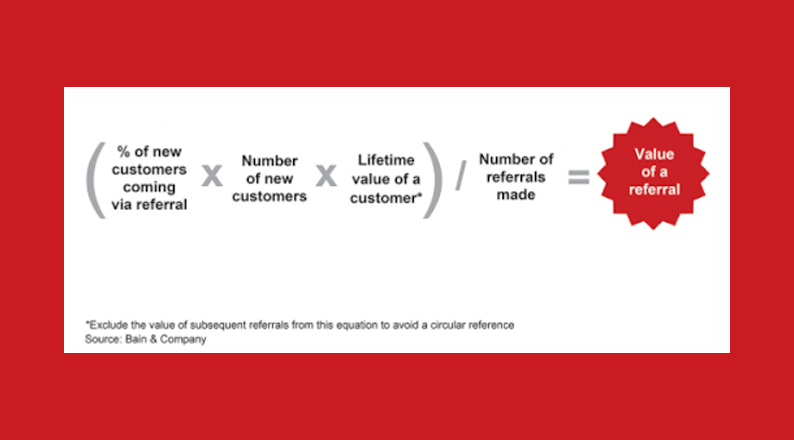
The lifetime value (revenue) a business can reasonably expect to gain from a customer throughout the business relationship (CLTV) is obtained as:
*Average Sale Value x No of Annual transactions per Customer x Retention Period x Profit Margin*
You should also motivate your team to enhance their performance, in order to consistently exceed customer expectations. Your employees should be a part of the NPS spirit, a practice that makes them feel that they are an influential force in your business’s success.
Review progress

It is not enough to review statistics and take action without understanding if the corrective measures employed are bearing fruits.
In your monthly newsletters, ensure to provide feedback to your readers on the improvements you have made to address the issues identified in the survey.
Customers will be more loyal to your brand if they learn that you are taking their feedback seriously and making changes to improve service delivery.
You should then send more surveys, perhaps every quarter to determine if you are making any progress in neutralizing your detractors and increasing the number of promoters.
The higher the NPS score, the better, but the most important thing is to see continuous improvement.
An increase in the number and value of referrals will also tell you if you are making a positive impact on your existing customers.
NPS applications in eCommerce
MasterClass

MasterClass sends an NPS survey to customers once a learner has completed at least one of the courses offered. The timing is appropriate because it enables the administrators to gather fresh insights that they can use to improve in their course curriculum.
In addition to the quantitative score that asks learners to rate their willingness to recommend the classes to someone else, MasterClass also uses a qualitative survey to gather more contextual information on the areas students find most valuable.
ALSO READ: Impact of e-Commerce On Society: Advantages and Disadvantages
Soapbox
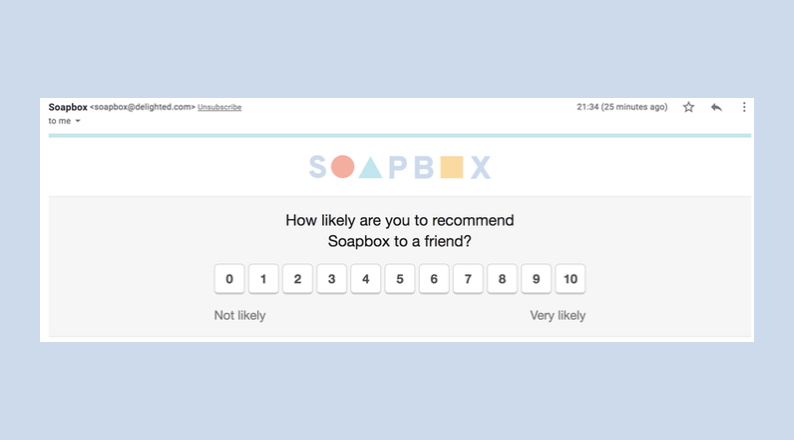
Soapbox, which is a part of a video software company, Wistia, uses simple, yet effective, email surveys. This tactic allows the respondents to take their time to use the company’s product and service, and reflect on the customer experience offered.
Unlike surveys sent immediately after using a service, email surveys can have a lower response rate because customers have to put in more effort by opening the email, clicking on the survey link, and submitting their responses.
However, emails enable you to collect more detailed answers that you can use to improve the experience of your detractors.
Conclusion
NPS is a performance measure that companies use to determine the number of customers willing to recommend a brand’s products and services to others.
The goal of using NPS in your eCommerce website should be to measure and improve customer satisfaction and experience.
Indeed, many online outlets have found success in using NPS to create positive perceptions and brand image, establish customer loyalty and increase sales, and drive competitive advantages.
To use NPS effectively and successfully, design a survey, distribute it, analyze your results, take the appropriate action to convert passives and detractors into promoters, and review progress.
Ensure to send surveys continually, at least every quarter to gauge if the improvements made in your internal processes are bearing fruits.
Acowebs are developers of WooCommerce plugins that will help you personalize your stores. It supports the additional option with feature-rich add-ons which is WooCommerce Product Addons, that are lightweight and fast. Update your store with these add-ons and enjoy a hassle-free experience.












 Login
Login
 Cart
Cart